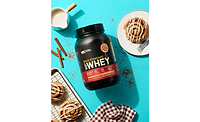Flavors on topsy, turvy path
Various twists on traditional trends spur innovation

Ayala’s Herbal Water offers its line of organic, herb-infused sparkling water in Lemongrass Mint Vanilla, Cinnamon Orange Peel, Ginger Lemon Peel and Lavender Mint varieties. Herb flavors are a growing trend, suppliers say.

PepsiCo’s SoBe Lifewater brand offers a Cherimoya Punch variety that incorporates the natural flavor of a newly emerging superfruit in combination with a well-known punch profile.



New Leaf Brands offers a line of lemonade varieties in Homemade as well as the following flavors: Black Cherry, Strawberry and “The Tiger,” which is a blend of half iced tea and half lemonade.









Earlier this year, Beverage Industry’s 2011 Product Development Survey forecasted a return to traditional flavors. Survey respondents indicated that traditional flavors, such as chocolate, vanilla and strawberry, remained popular choices, but rising stars such as superfruits were not as popular as lemon, lime and orange flavors. Now more than mid-way through the year, ingredient suppliers are reporting that industry flavor trends continue to include superfruits as well as several twists on traditional favorites.
The “twist” could be as simple as offering a specific varietal of a popular fruit, such as Valencia orange, Meyer lemon or Granny Smith apple. Robertet Flavors has developed natural varietal fruit flavors that apply to a number of trends, says Suzanne Niekrasz, director of marketing communications for the Piscataway, N.J.-based company.
“Over the past decade we saw mango’s popularity rise dramatically, to the extent that it is now a mainstream American flavor,” Niekrasz says. “So we felt the time was ripe to commercialize a next-generation line of natural varietal mango flavors that can help brands further differentiate their products on highly competitive shelves.”
The company offers Alphonso, Tommy Atkins, Kent and other varietal types of mango, which each exhibit distinct mango flavor profiles, the company says. It also has commercialized Niagara grape, Empire apple, Sunburst cherry and Seckel pear varietal fruit flavors, she says.
Overall, beverage flavor trends do not seem to be able to stick to any one direction, says Philip Barone Jr., director of flavor development for Irwindale, Calif.-based California Custom Fruits & Flavors.
“Our beverage customers are all over the map,” Barone says. “Depending on the application, they can request retro flavors, such as cola, root beer and black cherry, one minute, then request tiramisu mango, café mocha spice and black licorice cola the next.”
‘Natural’ appeal
Beverage Industry’s Product Development Survey also found that consumers’ desire for healthy and natural products was a key influence for beverage-makers. The two attributes were ranked by 38 percent of respondents as “must-haves” for consumers.
A majority of Beverage Industry’s survey respondents indicated plans to use natural flavors in 2011 with 28 percent saying they will use 100 percent natural flavors. For the minority who responded that they planned to use more natural flavors this year, they cited consumer and market demands as the main drivers. Thirty-six percent of survey respondents said they planned to use no artificial flavors in 2011, the survey showed.
“Today most of our flavor requests for beverages are for natural flavors,” says Anton Angelich, group vice president-marketing for Virginia Dare, Brooklyn, N.Y. “With a bombardment of often-confusing media and Internet information about various ingredients in regards to health, nutrition, food safety and sustainability, consumers feel that a safe bet is choosing more natural-labeled food and beverage products.”
A.M. Todd reports that five years ago, about 75 percent of its customers were seeking natural labeling; now more than 95 percent want their new products to be natural, explains Chuck Dodson, director of consumer insights and marketing for the Kalamazoo, Mich.-based company.
“Natural is the rule, artificial is the exception,” says Domenick Luccarelli, A.M. Todd’s director of business development. “Customers are looking for the cleanest natural label possible with the highest flavor impact.”
The increased demand from its customers is driving A.M. Todd to continue to develop unique and concentrated isolates, including extracts and distillates, which can be used as a flavor driver or a building block ingredient in product development, Luccarelli says.
Companies, such as Robertet Flavors, have monitored the demand for natural flavors through the years.
“Robertet’s core strength is in natural materials, and we’ve been closely monitoring the decades-long trend toward natural flavors,” Niekrasz says. “But a number of other major trends support the natural ingredients movement, including general health and wellness concerns, a search for food authenticity, and the growing importance of ‘free-from’ statements and clear labels in general.”
California Custom Fruits & Flavors’ Barone says the company continues to work on its line of all-natural flavors, the majority of which do not contain synthetic solvents such as propylene glycol. This selection of flavors also are organic compliant for formulation into organic beverages, he says.
Beverage Industry’s Product Development Survey showed that 23 percent of survey-takers said organic is the latest trend, which is an increase from 12 percent of respondents from the previous year’s survey.
Through the years, Robertet Flavors has increased its offerings of organic and organic-compliant ingredients, but Niekrasz cautions that the global economy might have an effect on the longevity of the category.
“Future growth of organic and organic-compliant flavors and their use in processed consumer goods will be tempered by cost and supply issues, as those materials continue to be more expensive to source and produce,” she says. “Robertet continues to search for other opportunities that will further strengthen our natural ingredients portfolio.”
Allen Flavors sees a tangential trend that aims for even more specificity regarding a product’s origin, explains Cathianne Leonardi, flavorist for the Edison, N.J.-based company.
“I think within the natural category, there’s more depth going to single sourcing,” Leonardi says. “It’s not just an orange, it’s an orange grown on my uncle’s farm in Sicily that we didn’t pick until after August 31 and we hand-carried in a cotton bag. I think that the natural category is being much more focused in organic and sourcing.”
Superfruits surge
This year, Beverage Industry Product Development Survey respondents ranked pomegranate as a Top 10 flavor, but fellow superfruit acai fell to 14th on the list. Although the respondents to the magazine’s survey indicated that superfruits were waning in popularity in 2010, ingredient suppliers continue to highlight the healthy fruits as popular requests from their customers.
Often included in the superfruit category, berries remained a popular choice, according to Beverage Industry’s Product Development Survey. Berry in general received 42 percent of votes as a most popular beverage flavor, while raspberry and blueberry each received 40 percent popularity.
Colleen Roberts, director of sales for Flavor Dynamics Inc., South Plainfield, N.J., said the most popular requests from its customers continue to be blueberry, acai and pomegranate. The company is active in flavor development for distilled beverages, carbonated beverages and dry blends, and Roberts says that its superfruit flavors often appear in blends to give the superfruit flavors more fruity and pleasing profiles.
Robertet Flavors’ Niekrasz also reports continued interest in dark berry flavor profiles. She notes well-known berry flavors such as blueberry and blackberry often are combined with more exotic currant or acai flavors to offer new combinations of the fruits to consumers.
Combinations of berry flavors also are popular with A.M. Todd’s customers.
“There has been interest in berry flavors — blueberry, blackberry and raspberry — in combination with a variety of other flavors, particularly superfruit-type flavors,” explains Dodson. “Coconut seems to be emerging as a flavor of interest, and mango use is increasing. Pomegranate and cranberry use is strong and growing.”
The company also is keeping an eye out for new superfruits, A.M. Todd’s Luccarelli says.
“It seems that every month a new trendy tropical fruit is discovered and has interesting functional and flavor quality,” he says. “The majority of these fruits are unfamiliar to the U.S. consumer, so it is up to the flavorist and beverage technologist to match the unfamiliar with familiar and consumer-accepted profiles.”
David Michael & Co. highlights maqui berry, cupuacu and rambutan as new exotic flavors that it is working on, says Laura Ennis, senior beverage innovation technologist for the Philadelphia-based company.
Flavor Dynamics also is keeping a pulse on this trend by working on new superfruit flavors, such as camu camu or cherimoya, Roberts says.
“Every week you could ask me what are we working on and I could probably give you another fruit that we identified from another corner of the world,” she says. “It’s amazing how many of them are out there. But I think there will be a point where the consumer needs to identify with what they are purchasing. In my personal opinion, there’s a limit to how many superfruits you can put out there that are going to become very successful.”
Although consumers are interested in new options, blends might be the key to success for launching new superfruits, says Cherilynn Whitehouse, flavor marketing manager for Flavor & Fragrance Specialties, Mahwah, N.J.
“I see a lot of the flavor combinations, something that you already know like a strawberry, then you mix strawberry with basil, or pomegranate with yuzu — something that nobody knows, but they know pomegranate,” Whitehouse says. “There’s a lot of combinations that people are looking for, more so now than ever.”
Herbal twists
Basil is one of many new herbal-based flavors that ingredient suppliers are highlighting as the next big trend. As Whitehouse says, “Consumers want something new, but still familiar.”
Gold Coast Ingredients Inc. reports some of its latest customer requests have been for blends of herbal, floral and warm spice notes, citing Strawberry-Basil and Orange-Cardamom combinations for a carbonated soft drink and a juice application, respectively, says Toni Gitter, technical sales representative for the Commerce, Calif.-based company.
Robertet Flavors’ Niekrasz explains the roots of the herbal trend lie in the culinary and mixology industries.
“The trend is more advanced in the restaurant space with bartenders and professional mixologists leading the way with innovative use of flavors such as cucumber, cilantro, basil, cardamom, pink peppercorn, jalapeno and even various vinegars,” she says. “As American baby boomers age and as they continue to shy away from highly sweetened products, expect to see more savory-oriented beverages being launched into the marketplace to meet their ever-evolving needs.”
The trend toward less sweet and more complex flavor profiles has a sophisticated adult appeal, but also presents a marketing challenge, says A.M. Todd’s Dodson.
“This is resulting in combinations of flavor ingredients that are uncommon and often being identified on labeling not by the flavor names, but by new creative descriptors,” he says.
A.M. Todd is seeing a trend toward adding top-notes of mint, herbs and flowers for new sensations as well as emerging non-traditional beverage taste experiences that come from the addition of basil, ginger, lemongrass and hibiscus, Dodson says.
Early this summer, Allen Flavors created a line of prototypes that incorporated herbs, such as Spearmint Basil Tea and Lemon Juice Jasmine Water. Company flavorist Leonardi also incorporated spices into two prototypes that were inspired by the New York Metropolitan Museum of Art’s exhibit dedicated to late fashion designer Alexander McQueen. Leonardi was inspired to create beverages that would add a taste element to the sensory-rich exhibit, she says. The prototypes included a Black Cherry Pepper Soda that incorporated Madagascar black pepper oil for a fruity, yet dark and spicy beverage and an Apple Rose Blossom beverage that was inspired by a dress made from fresh and silk flowers.
Flavor Dynamics’ Roberts says combinations of superfruit flavors with herbs is a trend that the company has been monitoring.
“What might be showing up as a new trend that we’ve been working on in our laboratories for the last two years is the introduction of sweet and spice,” Roberts says. “We’re seeing orange-tarragon, basil-berry and lemongrass-basil, those types of combinations seem to be gaining popularity, and that’s something that we’ve been working on for quite a while. I would say that we are a leader in this particular category, rather than a follower.”
Flavor & Fragrance Specialties also highlights a surge in fruit and herbal combinations, such as Strawberry-Basil or Rosemary-Lemon, says Paul Riker, beverage applications specialist for the company.
California Custom Fruits & Flavors notes cucumber mint and floral-infused flavors, such as black tea with lavender and raspberry hibiscus, have been trending lately, Barone says.
“These esoteric flavor combinations complement flavored waters that offer low calories and functionality,” he says.
Lavender also was cited by David Michael’s Ennis in a combination of the herb and orange blossom. The company also has fused blood orange with lime for a new twist on traditional, she says.
Sensus LLC notes that herbs, such as lemongrass, lavender and chamomile, have been tapped for flavors in relaxation-aimed products, says Paul Harrison, vice president of sales and business for the Hamilton, Ohio-based company. By using its spinning cone extraction process, Sensus’ herbal flavors feature very fresh top notes that enhance beverage products, it says. The company’s focus is to enhance the functional components of the herb product as well as impart taste and aroma into the application, it says.
With its recent work focused in the alcohol industry, Chicago-based Sethness Greenleaf has been developing herbal infused flavors, says Tom Schufreider, vice president of global sales and marketing for the company.
“The trend is now toward simple, clean, fresh profiles,” Schufreider says. “From a flavor standpoint, [customers] are very interested in herbs and flavor profiles that have clear, crisp, distinctive kinds of notes. We see a lot of requests for elderflower, cucumber, lemongrass, pear and apple.”
Cucumber is a growing trend that has a lot of momentum, according to Schufreider. Its fresh, sweet taste is similar to watermelon, but without the impact of the melon flavor, he says. The introduction of cucumber combined with watermelon in an enhanced water, for example, could attract adults who are looking for a less sweet beverage option, he says.
Sethness Greenleaf also has worked on applications that connect the fresh connotations of herbs with their good-for-you reputation, he says.
“So I have a drink that’s got basil in it or I have a drink that’s got, perhaps, pine needles in it for a piney background note; it has the essence of the pine needles,” Schufreider says. “It’s kind of a getting-back-to-nature style of mixology. From a flavor house standpoint, [customers] are looking for the notes because they don’t want to have pine needles in their drink, and they don’t want to have big basil leaves, although [you can] drape one over the side of a drink. Some of those background flavors, extracts and compounding flavors with those notes; we’re being asked for those a lot.”
Healthy halo
Herbal flavors also affected one of the industry’s growing categories: tea.
“Tea has become such a strong platform that people want to blend tea with everything,” Virginia Dare’s Angelich says. “They are not happy anymore with just green tea, they want green tea with jasmine, honeysuckle or some floral note, honey, ginger or lemon. To a lot of people, green tea is not an appealing taste; they see the health benefits, but they really want something that is thirst-quenching.”
In addition to green tea, Angelich also has seen an increased interest in rooibos, or red, tea. The South African tea variety is often an undiscovered flavor that once people taste it, they tend to like it, he says.
Sensus Flavors reports receiving increased interest in “fresh brewed” tea as well as coffee profiles, Harrison says. The company offers a lineup of Asian-profile black tea, African-profile black tea, green tea, white tea and rooibos flavors. Its extraction process provides fresh and aromatic profiles for tea as well as various roasts of coffee, the company says.
Also expanding the flavor options for tea-based beverages is the boom in tea-lemonade combinations, notes Robertet Flavors’ Niekrasz.
“The tea with lemonade category is ripe for further launches when you consider the many combinations of flavors, sweetness levels, juice levels and added-value functional ingredients that can be explored as product differentiators,” she says. “There are also new formats to explore, such as sparkling tea lemonades.”
Robertet Flavors has a strategic position within the tea category, Niekrasz says, and is therefore primed to take advantage of this niche.
“With diverse product offerings including natural tea essences, tea solids and tea flavors, Robertet has been at the forefront in the development of these refreshing tea plus lemonade formulations, and has the expertise to create any desired combination with a wide variety of base formulations and sweetener systems,” she says.
Lemonade on its own also has seen a spike in popularity recently. Virginia Dare’s Angelich notes that traditional lemonades might be considered boring by some consumers who are looking for fruit-flavored lemonade varieties.
Sethness Greenleaf’s Schufreider credits McDonald’s with the increase in demand for flavored lemonades. This summer, the restaurant chain released a Frozen Strawberry Lemonade, which as with McDonald’s Smoothies, capitalized on traditional flavor preferences, he says.
“They’ve done the marketing work and they’ve identified, ‘What do people like?’ and people like Strawberry Lemonade and they like Strawberry Banana,” he says. “These are not new flavors, and it’s not a new combination of flavors, but it’s their marketing muscle and their advertising campaign, which has kind of reignited not only the flavor profile, but they’ve positioned [the smoothies] as natural strawberry and natural bananas.”
In addition to lemon, fellow familiar citrus fruit lime has been featured prevalently in beverage applications in the last few years. Sethness Greenleaf’s Schufreider says the fruit is still popular with its clients in the alcohol industry.
“Probably the single hottest thing that we’ve been asked for in one form or another is lime,” he says. “Lime is just across the board; it is fresh, it is clean. I think in people’s minds when they smell lime they think of it as a fresh note, they don’t confuse it with something other than fresh. Mixologists and development people in the spirits and the wine industry are actively incorporating lime in as many places as they can.”
Toward the traditional
Although exotic flavors ruled the industry for some time, a few ingredient suppliers note that the pendulum might be swinging back to more traditional flavor options.
“We see people moving away from a lot of the more exotic, tropical superfruits and moving toward, I’d call [it] more of the North American or American comfort food type things like cherry, blackberry, blueberry, cranberry,” Virginia Dare’s Angelich says. “This may also come from some of the global food scares. People are saying, ‘Do I really want something coming from some distant, exotic land where there could be a health risk to it? I know what blueberry is. I know what cranberry is. And I didn’t realize they were so good for me.’”
A.M. Todd is finding many customers requesting combinations of superfruit, exotic tropical fruit and specialized geographic-specific variants with traditional flavors, Dodson says.
“We are seeing more activity in unique combinations of two flavors,” he says. “They are generally combinations of well-accepted traditional flavors, such as grape, cherry, lemonade, peach and similar flavors, combined with new lesser-known flavors.”
The key to this tactic, Dodson says, is “everyone is looking for the unique taste based on an interesting description that can become associated with their brand.”
Gold Coast Ingredients’ Gitter suggests that traditional flavor profiles might be safe bets for new product launches.
“The standard strawberry, vanilla, chocolate, orange and lemon are always popular and will continue to be at the top of the requests for beverages,” she says. “These profiles are especially important for new products entering the marketplace. To get your item on the shelves and purchased, you need to start with flavors consumers can recognize and link the flavor and taste to a positive response.”
Consumers’ desire for the familiar also has led to popularity in indulgent or dessert-inspired flavors. California Custom Fruits & Flavors is “getting back to basics with indulgent, feel-good flavors” that incorporate clean label-applicable components, Barone says.
“Whether hot or cold, drinkable desserts and indulgent coffee styles give consumers a chance to indulge their taste buds, and interest can kick up a notch when the flavor is unexpected in the category,” Robertet Flavors’ Niekrasz says. “Flavors often cross over from traditional desserts — think crème brulee, red velvet cake, spiced pumpkin pie, toasted marshmallow, salted caramel — but in a deliciously drinkable format.”
Flavor & Fragrance Specialties’ Riker cites red velvet, salted caramel and seasonal flavors as being popular in coffee and tea categories. The sweet flavors also are emerging in alcohol, as Riker notes a recent whipped cream flavored vodka launch.
Candy and dessert flavors were noted by David Michael’s Ennis who spotlights cinnamon bun, root beer float, s’mores and Swedish Fish as flavor types for alcohol and non-alcohol beverages.
Virginia Dare’s Angelich says coffee is one of the most popular categories, which includes both hot and iced versions of the beverage.
Allen Flavors has created seasonal options for gourmet coffee roasting flavors for the upcoming holiday season. The company brought back Spiked Eggnog and Pumpkin Spice varieties in addition to new releases Chocolate Rum and Toasted Coconut Macaroon flavors.
The company’s flavorist Leonardi also foresees a new challenge on the horizon for beverage-makers.
“We’re always going to have vanilla, chocolate, strawberry, those aren’t going to lose their places, but I see more and more quick responses to the marketplace,” she says. “I see more and more the personification of flavor where you are putting it toward either something that’s in the media or a personality in the media. And why not have beverages for events? Why not have beverages designed off of a television show or off of a book?”
She cites Absolut’s line of city-inspired flavors as well as Vitaminwater’s Formula 50, which was developed in collaboration with hip-hop artist and actor Curtis “50 Cent” Jackson, as some of the far-reaching examples of the possibilities for flavor inspiration. BI
Looking for a reprint of this article?
From high-res PDFs to custom plaques, order your copy today!















